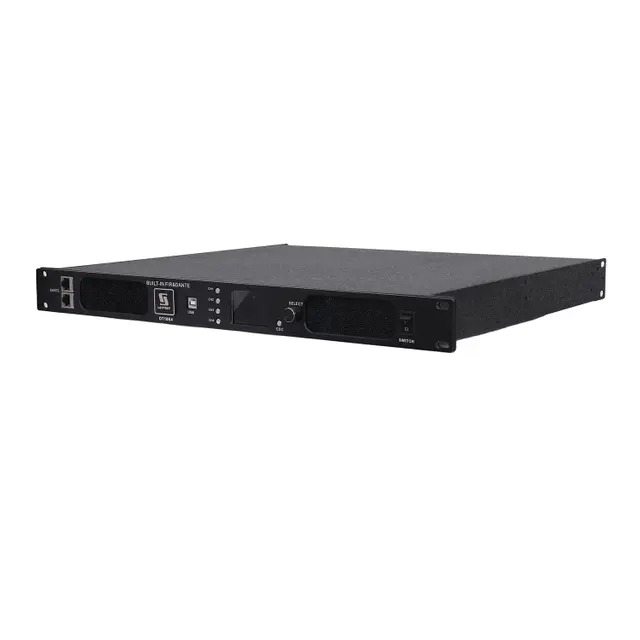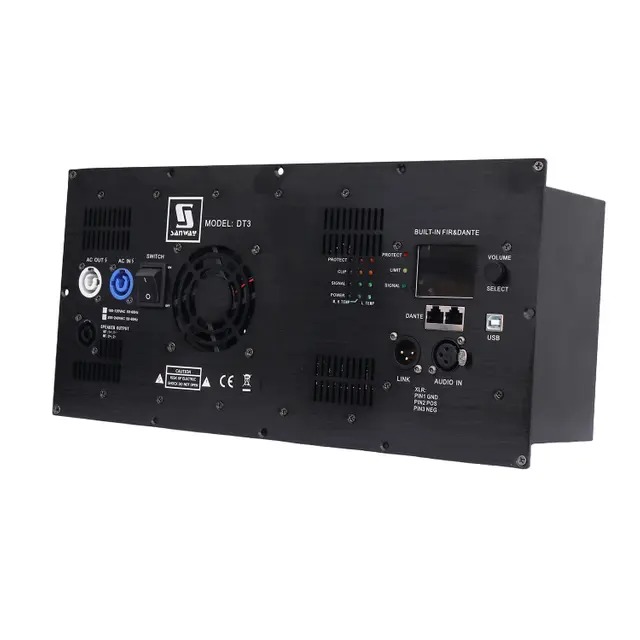
Introduction
In modern electronics, digital power amplifiers have transformed the way audio and signal amplification is achieved. Unlike traditional analog amplifiers, digital variants utilize advanced signal processing and pulse-width modulation techniques to deliver higher efficiency and lower power loss. As audio systems, industrial devices, and communication infrastructures demand higher performance with compact footprints, digital amplifiers have become the preferred solution.
The efficiency of an amplifier relates to how well it converts electrical power from a power source into a usable output signal. Analog amplifiers tend to waste a significant amount of power as heat, especially when operating at higher loads. In contrast, digital amplifiers, commonly referred to as Class D amplifiers, mitigate this issue using switching transistors that operate either fully on or fully off. This switching method minimizes energy loss and improves thermal performance, making digital amplifiers far more efficient than their analog counterparts.
Understanding How Digital Power Amplifiers Work
At the core of a digital power amplifier lies a fundamental difference in signal processing. Traditional amplifiers use continuous signal manipulation, where the transistor stays in the linear region for amplification, leading to significant energy loss in the form of heat. In contrast, digital amplifiers use binary switching technology. The input analog signal is first converted into a high-frequency pulse-width modulated (PWM) signal, which is then used to switch the output transistors at extremely high speeds.
These switching transistors work like on-off switches, minimizing the time they spend in a transitional state (where most power is lost). When the switch is fully on or fully off, it ideally has zero resistance or no current flow, respectively, hence negligible power dissipation.
After switching, the PWM signal passes through a low-pass filter to reconstruct the analog waveform at the output. This method of digital signal processing enables digital amplifiers to handle high power with reduced heat, increased battery life (in portable devices), and smaller heat sinks, all while maintaining excellent audio fidelity.

Efficiency Comparison — Digital vs. Analog Amplifiers
When comparing digital power amplifiers to analog ones, efficiency is the standout metric. Efficiency is typically measured as the ratio of output power to total input power, expressed as a percentage.
| Amplifier Type | Typical Efficiency Range |
| Class A (Analog) | 20% - 30% |
| Class AB (Analog) | 50% - 60% |
| Class D (Digital) | 85% - 95% |
The reason for this stark difference lies in the operational principle of each type. Class A amplifiers are the least efficient, as their transistors conduct continuously, leading to constant power dissipation even without an input signal. Class AB improves on this by using push-pull transistor pairs, but still suffers from crossover distortion and moderate heat loss.
Digital power amplifiers, however, use pulse modulation and switching power stages, where losses occur primarily during the brief transitions between on and off states. Consequently, their efficiency exceeds 90% in many cases, making them ideal for energy-conscious applications.
Thermal Management and Reduced Heat Generation
One of the most tangible advantages of digital power amplifiers is their ability to operate with minimal heat output. Traditional analog amplifiers require extensive heat sinks, fans, or thermal management systems to prevent overheating during prolonged use, especially at high power levels. In contrast, digital power amplifiers significantly reduce these thermal requirements.
Because they waste less energy as heat, digital amplifiers often feature compact designs and lighter heat dissipation components. This translates into not only better energy efficiency but also increased system reliability. Excessive heat is a common cause of electronic component failure, so minimizing thermal output extends the operational lifespan of the amplifier and surrounding circuitry.
This advantage becomes especially critical in confined or thermally sensitive environments such as portable devices, automotive systems, aerospace electronics, and industrial automation where cooling options are limited. The thermal stability of digital amplifiers enables engineers to build more compact, robust, and efficient systems without sacrificing power output.
Real-World Applications of Digital Power Amplifiers
The high efficiency and compact form factor of digital power amplifiers have made them indispensable across various industries:
Consumer Electronics
Digital amplifiers are now commonplace in portable audio devices, smart speakers, soundbars, and televisions. Their minimal power consumption extends battery life and reduces device temperature, enhancing user experience and product longevity.
Automotive Systems
Modern vehicles rely on digital power amplifiers to manage audio systems, infotainment units, and even engine control units. Their efficiency helps reduce the load on the vehicle’s battery and alternator, contributing to improved fuel economy and electronic reliability.
Industrial Automation
In factory automation and robotics, digital amplifiers power motors and control units where energy efficiency and thermal control are crucial. Their ability to drive high loads with low heat output makes them ideal for continuous, heavy-duty operations.
Renewable Energy Systems
Inverters and solar power systems benefit greatly from digital amplifier technology. With the growing push toward sustainable energy, efficient power conversion using digital amplifiers ensures maximum energy utilization and minimal loss.
These examples underline how digital power amplifiers go beyond audio applications and have become critical to energy-efficient design across diverse technological landscapes.

Advantages of Digital Amplifiers Beyond Efficiency
While efficiency is the defining trait, digital amplifiers offer a host of other benefits:
Compact Design: High efficiency allows for smaller heat sinks and cooling systems, resulting in more compact and lightweight units.
High Fidelity Audio: Advanced signal processing delivers high dynamic range and low distortion, rivaling analog performance.
Scalability: Digital amplifiers can be easily integrated into multi-channel systems and scaled for different power levels with fewer thermal constraints.
Reliability: With fewer moving parts (e.g., no fans), digital amplifiers often require less maintenance and experience fewer failures.
Cost Savings: Long-term energy savings and reduced thermal design costs contribute to lower total cost of ownership.
These advantages collectively enhance the appeal of digital amplifiers, especially in modern electronics where space, power, and performance need to coexist harmoniously.
Frequently Asked Questions (FAQ)
What is a digital power amplifier?
A digital power amplifier is a type of amplifier that uses digital signal processing and switching output stages (like Class D topology) to convert electrical signals into amplified output. It differs from analog amplifiers in that it operates via rapid on/off switching, resulting in higher efficiency and lower heat generation.
Why are digital power amplifiers considered more efficient?
They convert most of the input power into output signal with minimal loss due to their switching nature. Since transistors are either fully on or fully off, very little power is dissipated as heat, unlike analog designs where transistors operate in partially on states.
Do digital amplifiers affect sound quality?
Modern digital amplifiers have evolved to produce high-fidelity audio with low distortion and high signal-to-noise ratios. With proper filtering and circuit design, they deliver audio performance comparable to or better than traditional analog amplifiers.
Are digital power amplifiers suitable for high-power applications?
Yes. Digital amplifiers are well-suited for high-power applications due to their thermal efficiency, compact size, and ability to drive heavy loads. They are widely used in professional audio equipment, industrial systems, and renewable energy inverters.
What are the challenges in designing digital amplifiers?
Designing digital power amplifiers requires careful attention to EMI (electromagnetic interference), accurate PWM conversion, and effective output filtering to ensure clean signal reconstruction. These challenges, however, are outweighed by the efficiency and size benefits they provide.
Conclusion
Digital power amplifiers are no longer just a niche innovation—they are a cornerstone of efficient, high-performance electronic design. Their unparalleled efficiency, reduced thermal footprint, and versatility make them the amplifier of choice for engineers and product developers across industries.
Whether you're developing the next generation of audio systems or designing power-hungry industrial machinery, understanding why digital amplifiers are more efficient helps inform better choices, reduce energy consumption, and extend the lifespan of your electronics. In a world increasingly defined by energy efficiency and smart design, the digital power amplifier stands as a testament to how intelligent engineering can change the game.

 English
English











